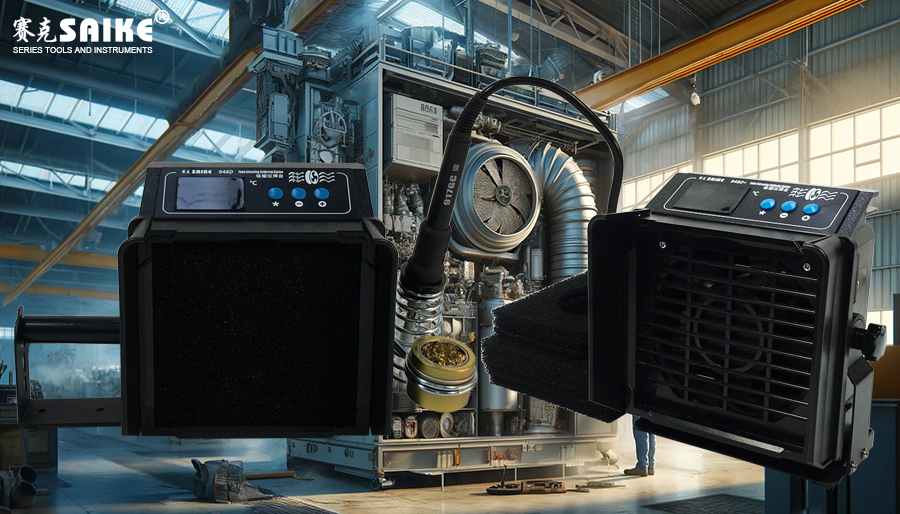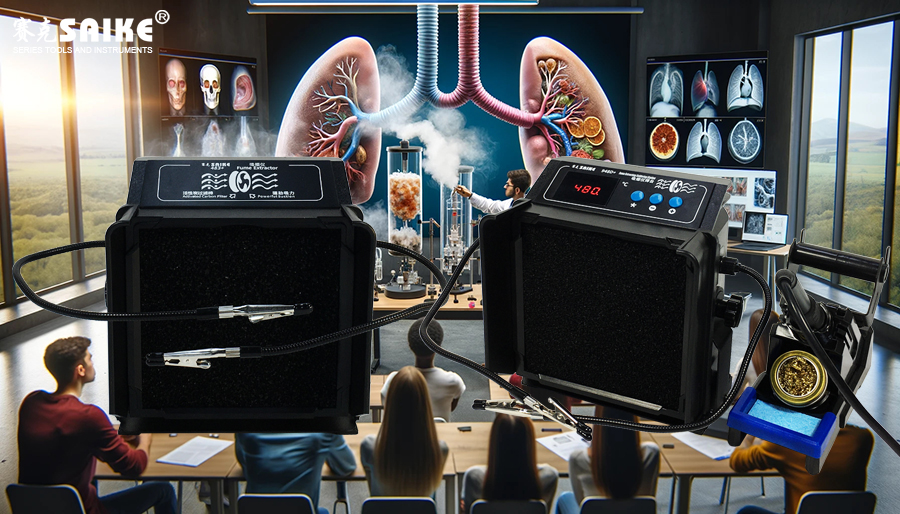
SK-YJ000XYY-KP 100002
I. Working Principle of Fume Extractors
1.Main Components
– Fume extractors primarily consist of a fan (or blower), a filtering system, and an exhaust system. The core of the device lies in its powerful suction and efficient filtering capabilities.
2.Suction and Filtering Process
– Fan suction: The fan creates negative pressure to draw smoke and air into the device.
– Primary filtering: Larger particles and coarse impurities are intercepted by the primary filter layer.
– High-efficiency filtering: Smaller particles and harmful chemicals are adsorbed and filtered through a HEPA filter or activated carbon filter.
– Exhaust treatment: The filtered air is returned indoors or emitted outdoors through a dedicated channel, ensuring that the emitted air meets environmental standards.
3.Control System
– Modern fume extractors are often equipped with an electronic control system that can adjust fan speed, monitor filter status, and automatically adjust suction to adapt to different working environments and smoke volumes.
II. Smoke Generation Mechanisms
1.Welding Smoke Generation
– During the welding process, high temperatures cause thermal decomposition and oxidation reactions in metals and fluxes, generating smoke. This smoke mainly consists of metal oxides, organic gases, and fine particles.
2.Smoke from Chemical Experiments
– Chemical reactions, such as acid-base reactions or organic synthesis, can produce gases and aerosols.
III. Smoke Inhalation Mechanisms
1.Mixture of Smoke and Air
– Smoke spreads in the air, forming suspended particles that can be inhaled through the respiratory tract.
2.Impact on the Respiratory System
– Tiny smoke particles can penetrate deep into the lungs, damaging the alveoli. Long-term inhalation may lead to occupational diseases like pneumonia, asthma, or even lung cancer.
3.Protective Measures
– Using fume extractors effectively reduces the inhalation of smoke particles, minimizing the impact on human health. Adequate ventilation and the use of personal protective equipment (such as respirators) are also essential safety measures.
IV. Conclusion
Understanding the working principles of fume extractors and the mechanisms of smoke generation and inhalation is crucial for safe production in scientific research and industrial fields. Proper configuration and use of fume extractors can not only enhance work efficiency but also effectively protect the health and safety of employees. With technological advancements, more efficient and intelligent fume extractors will further elevate the levels of environmental protection and occupational health and safety.


